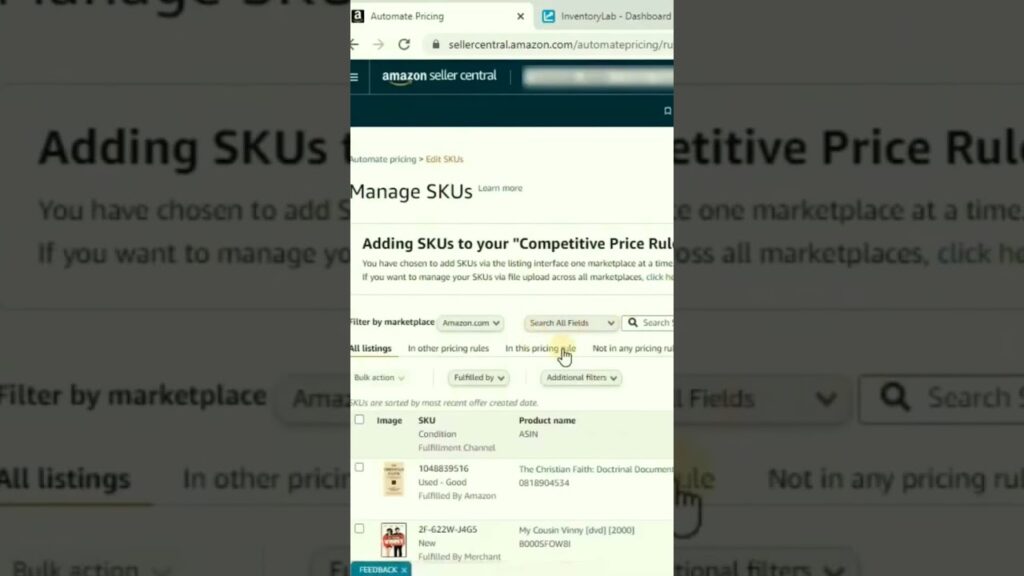Maximizing Profits: A Comprehensive Guide to Setting Up Automatic Repricing for Your Amazon Listings

In the fiercely competitive landscape of e-commerce, pricing is a critical factor that can significantly impact sales and profitability. As an Amazon seller, employing dynamic and strategic pricing strategies is essential for staying competitive and maximizing revenue. Automatic repricing tools offer sellers the ability to adjust prices dynamically in response to market conditions, competitor pricing changes, and other factors in real-time. In this exhaustive guide, we will explore the intricacies of setting up automatic repricing for your Amazon listings, providing detailed explanations, practical strategies, and valuable insights to help sellers harness the power of dynamic pricing effectively.
Importance of Automatic Repricing
Before delving into the specifics of setting up automatic repricing, it’s essential to understand why this strategy is crucial for Amazon sellers:
- Maintaining Competitiveness: Automatic repricing allows sellers to stay competitive by adjusting prices dynamically in response to changes in market conditions, competitor pricing, and customer demand.
- Maximizing Profits: By optimizing prices based on real-time data and market trends, sellers can maximize sales and profitability while minimizing the risk of overpricing or underpricing their products.
- Saving Time and Resources: Repricing manually can be time-consuming and labor-intensive. Automatic repricing tools automate this process, freeing up valuable time and resources for sellers to focus on other aspects of their business.
- Improving Sales Velocity: Dynamic pricing can help sellers win the Buy Box more frequently, increase visibility, and drive sales velocity, ultimately boosting overall revenue and performance metrics.
Understanding Automatic Repricing Tools
Automatic repricing tools are software solutions designed to monitor and adjust prices for Amazon listings automatically. These tools leverage algorithms, data analytics, and customizable settings to optimize pricing strategies and maximize profitability. Key features of automatic repricing tools include:
- Real-time Pricing Updates: Automatic repricing tools continuously monitor market conditions and competitor pricing, updating prices in real-time to ensure competitiveness.
- Customizable Repricing Rules: Sellers can define specific rules and parameters for repricing, such as minimum and maximum prices, target profit margins, and competitive positioning strategies.
- Competitor Analysis: Repricing tools provide insights into competitor pricing trends, allowing sellers to adjust their pricing strategies accordingly to maintain a competitive edge.
- Performance Analytics: Detailed analytics and reporting features enable sellers to track the impact of repricing strategies on sales, profitability, and other key performance metrics.
Setting Up Automatic Repricing for Amazon Listings
To set up automatic repricing for your Amazon listings effectively, follow these steps:
Step 1: Choose a Repricing Tool
Research and select a reputable automatic repricing tool that aligns with your business needs, budget, and technical requirements. Consider factors such as pricing, features, user interface, customer support, and integration capabilities with Amazon Seller Central.
Step 2: Connect Your Amazon Seller Account
Connect your Amazon Seller account to the repricing tool by granting appropriate permissions and authorizations. This allows the repricing tool to access your inventory data, sales metrics, and other relevant information needed for repricing.
Step 3: Define Repricing Rules
Configure repricing rules and parameters based on your pricing strategy, business goals, and competitive landscape. Consider factors such as minimum and maximum prices, target profit margins, competitive positioning, and repricing frequency.
Step 4: Set Up Competitor Monitoring
Specify competitors to monitor and track pricing trends for similar products in your niche or category. Analyze competitor pricing strategies and adjust your repricing rules accordingly to maintain competitiveness and maximize profitability.
Step 5: Monitor Performance and Adjust Settings
Regularly monitor the performance of your repricing strategies and analyze the impact on sales, profitability, and other key metrics. Adjust repricing rules, parameters, and competitor settings as needed to optimize results and achieve your business objectives.
Best Practices for Automatic Repricing
To maximize the effectiveness of automatic repricing for your Amazon listings, consider implementing the following best practices:
- Start Conservatively: Begin with conservative repricing rules and gradually adjust settings based on performance data and insights.
- Monitor Competitor Activity: Stay informed about competitor pricing trends and adjust your repricing strategies accordingly to maintain competitiveness.
- Test and Iterate: Experiment with different repricing strategies, settings, and parameters to identify what works best for your products and market conditions.
- Stay Compliant: Ensure compliance with Amazon’s policies and guidelines for pricing, including avoiding price gouging, collusion, or other prohibited practices.
- Regularly Evaluate Tools: Periodically evaluate the performance and effectiveness of your chosen repricing tool and consider switching to alternative solutions if necessary to better meet your needs.
Conclusion
Automatic repricing offers Amazon sellers a powerful tool for optimizing pricing strategies, staying competitive, and maximizing profitability in the dynamic and fast-paced e-commerce landscape. By understanding the importance of repricing, selecting the right repricing tool, configuring effective repricing rules, and implementing best practices, sellers can harness the full potential of automatic repricing to drive sales, increase profits, and achieve long-term success on Amazon. Continuously monitor market conditions, adjust repricing strategies as needed, and stay informed about industry trends to maintain a competitive edge and thrive in the competitive world of e-commerce.




